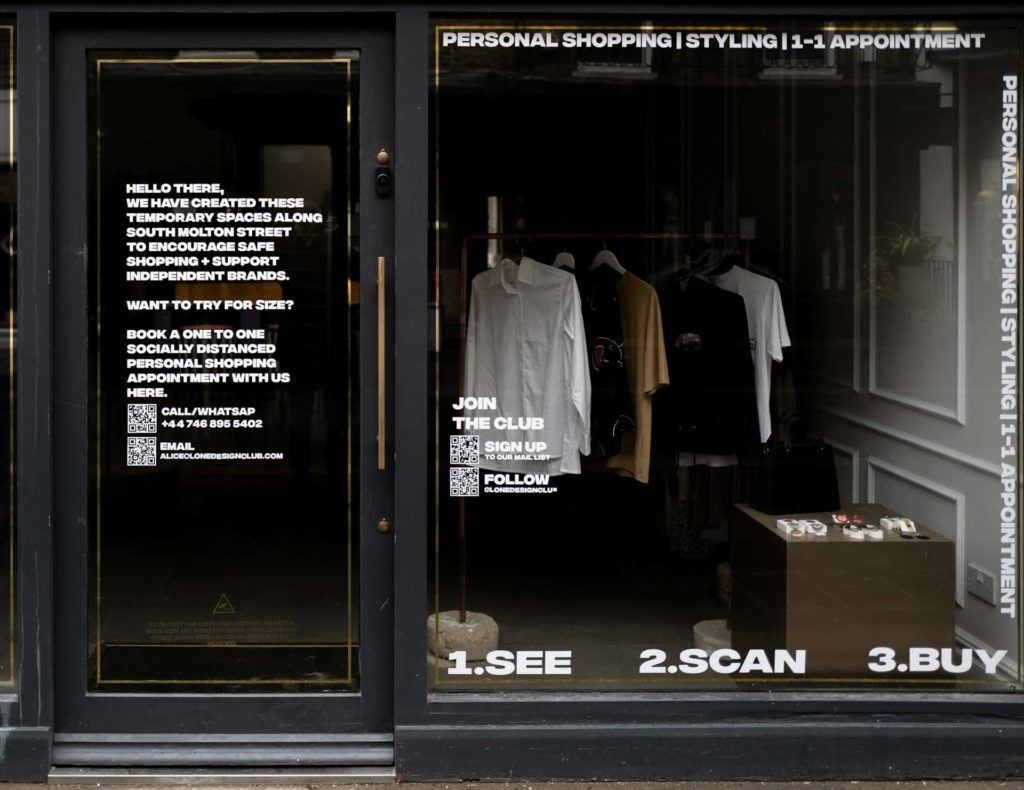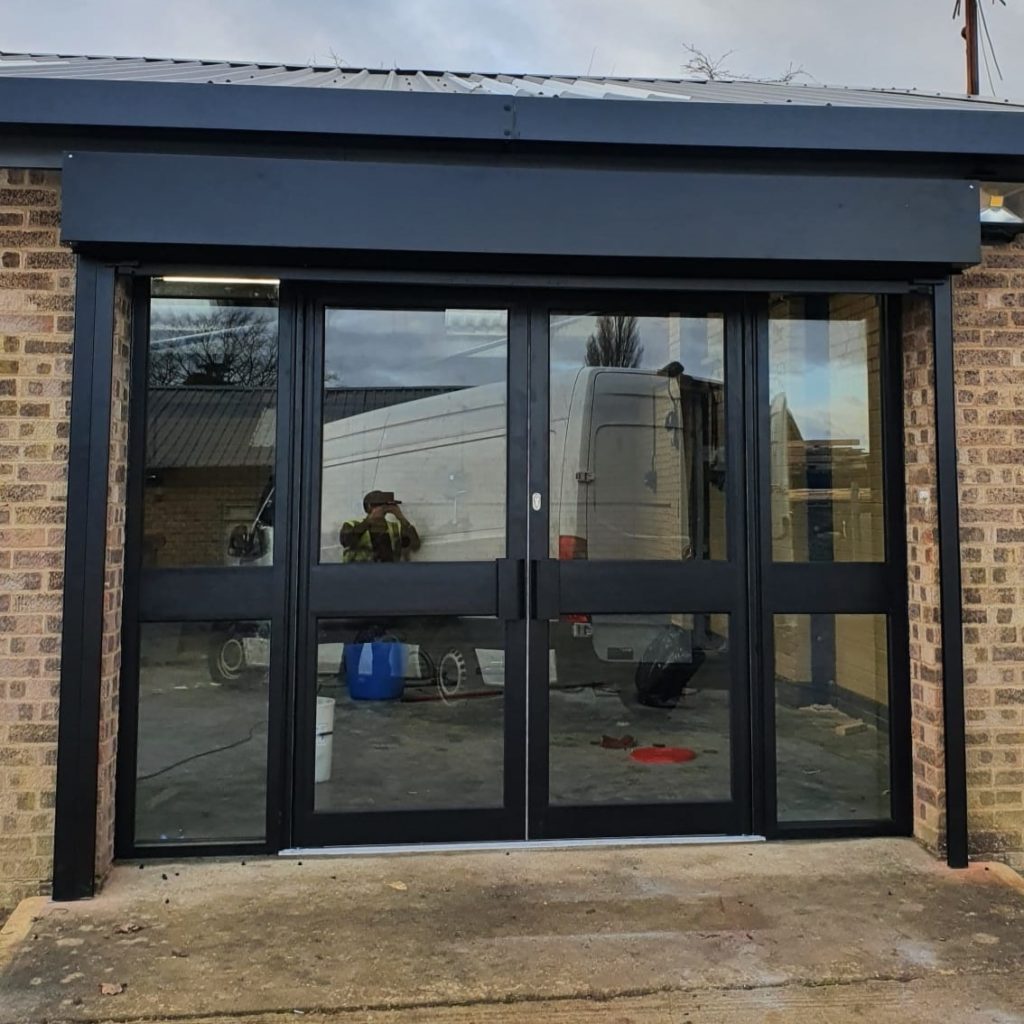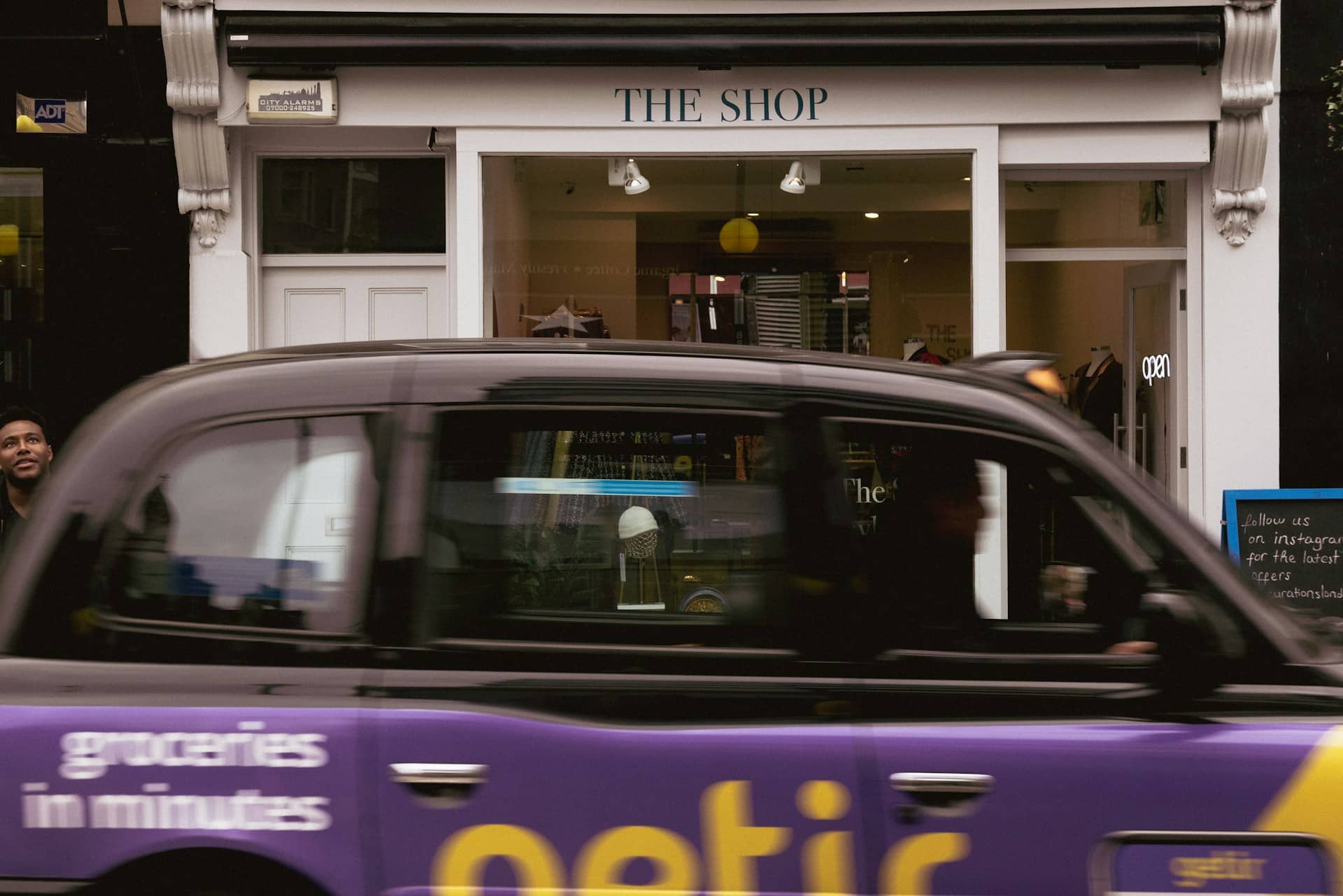No matter what type of building you’re using them for, roller shutters are extremely useful for protecting your business from theft and also limiting the impact of extreme weather. With multiple manual and electric shutter options available, it can be hard to know what you’re getting from each model. So, how do roller shutters work?
Roller shutters typically consist of slat curtains that are moved along guide rails. Whether moved by manual or electric operation, the slats roll on and off a roller barrel, which often sits at the top of the system. You’ll then also find a manual or electric, locking mechanism to lock the roller shutter in place..
In this blog, we’ll run through the different options for roller shutter operating systems, their key components, and how they might suit your shop front, storage unit, or industrial premises.
Article Contents:
- What Are Roller Shutters?
- What Are The Main Components Of A Roller Shutter?
- How Do Roller Shutters Operate?
- What Happens When You Open Or Close A Roller Shutter?
- What Are The Benefits Of Using Roller Shutters?
- Roller Shutter Maintenance Tips
- Secure Your Shop Fronts With Sykes London

What Are Roller Shutters?
Roller shutters are specialised types of door and window shutters, consisting of interconnected slats, bars, or web systems. They’re typically used to offer protection against a number of things, including wind and rain, but are most often used by business owners to prevent vandalism or burglary.
You can find out more about roller shutters and why they’re useful for businesses in our helpful blog: “Shop Front Shutters: What Is Their Purpose?”
What Are The Main Components Of A Roller Shutter?
Whether you choose a manual or electric roller shutter, they will typically have very similar components:
- Shutter Curtain: These are the slats or panels that roll up and down. This can be a single or multi-wall curtain, with both hollow and insulated designs available.
- Guide Rails: These are the channels that the shutter itself moves within. They may have additional seals to reduce vibration or extend a product’s lifespan.
- Roller Drum/Barrel: This is what the shutter rolls onto. They are typically supported by a plate at either end.
- Operating System: You may have either a motor or a manual system. This operates the shutter and allows you to access the windows and doors it protects.
- Control System: This might be a switch, remote, or even an app, for a motorised shutter, or a crank or chain on a manual shutter.
- Locks: In order to take advantage of the security benefits, you’ll likely need a lock system for your shutter. Whether this is a place that allows you to add your own padlock or an integrated lock and key system, locks are essential for security.
How Do Roller Shutters Operate?
Most roller shutters will fall into one of two categories – manual or electric. Both of them are operated in different ways, but offer similar levels of protection to your business. The ideal choice for you will depend on a number of things, including the space you have available and your budget.
- Manual Operation: These roller shutters are typically operated by a hand crank or strap system. They’re typically cheaper to install and tend to be suitable for protecting smaller openings.
- Electrical Operation: Electric roller shutters are powered by a motor inside the roller. They’re usually controlled by a wall switch, remote, or even your smartphone. They might be more expensive, but electric shutters are often more convenient for larger openings, like warehouses, where operational speed is important.
Find out more about the types of roller shutters in another one of our helpful blogs: “A Guide To Types Of Roller Shutters”

What Happens When You Open Or Close A Roller Shutter?
When you operate a manual or electrical roller shutter, the slats (also known as laths) will begin to move along the guide rails. As a roller shutter opens, the slats coil around the roller drum that is typically housed at the top of the system. When you close the roller, the slats will unroll, sliding smoothly back down the guide rails to cover the opening.
Once your shutter is fully closed, it’s important to remember your model’s locking mechanism. These both secure it in place and prevent forced entry, and the type of lock depends on the model you use:
- Manual Locks: You may have key-operated locks at the bottom of the shutter, locking it into place on the guide rods. Sliding bolt locks also have to be operated manually and may use a key or latch for extra security, depending on the design.. More basic models will simply allow you to lock them using padlocks through pre-drilled holes.
- Electric Locks: Motorised shutters often have built-in brakes that lock the motor when the shutter is down and prevent it from being manually lifted. You may also find automatic locks that engage when the shutter reaches the bottom. High-end models might even have options for integration with security systems, allowing you to engage locks remotely or trigger alerts when tampered with.
What Are The Benefits Of Using Roller Shutters?
Roller shutters bring a number of benefits to your business, home, or industrial unit, including:
- Security: Provides a physical barrier against burglary and vandalism.
- Insulation: Helps to retain heat inside your business, saving you money on energy bills.
- Protection From The Elements: Protects your facility from strong winds, heavy rain, and fierce hail. They can also be treated with materials to make them fire-resistant, preventing the spread by starving any possible fires of oxygen.
- Branding Opportunities: Roller shutters are also a great place to display your branding when your business is closed. Your logo, or something as simple as brand colours, will catch the eye of potential customers even outside of opening hours.
- Cleaner Windows: It can take a lot of effort to clear your shop front of dirt and grime. Save time during your work day by using a roller shutter to protect windows, doors, and signage overnight.
You can find out more about the benefits of installing roller shutters in your business by reading another one of our blogs: “Why Do Shops Have Roller Shutters?”
Roller Shutter Maintenance Tips
We understand that a roller shutter can be a big investment, so it’s important that you look after your roller shutters as much as possible to extend the life of the product and continue to experience its benefits.
Like any piece of machinery, shutter doors will require regular oiling to keep them running smoothly. They may become stiff and inoperable if not, so be sure to remember this maintenance step to prevent damage.
Regular cleaning will also extend the life of your roller shutter. Keep them running smoothly by removing dirt and dust regularly with a non-abrasive cleaning spray. It’s often easily forgotten, but can make a huge difference to both the life of your shutter and the appearance of your shop front.
We’ve written about roller shutter servicing and maintenance in more detail in our blog “How Often Should Roller Shutter Doors Be Serviced?”, so why not check it out?

Secure Your Shop Fronts With Sykes London
Here at Sykes London, we’ve been manufacturing and installing roller shutters for over 35 years, with a full suite of bespoke shutter design services to meet any budget or vision. Our experts take into account your business aesthetics, suitable materials, and your own requirements, like size or budget, to design and fit the best roller shutter for you.
We also offer a free quote and onsite inspection service, where we’ll combine our years of expertise with your vision to get you the best results. Click below to get in touch and secure your shop front with Sykes today.


